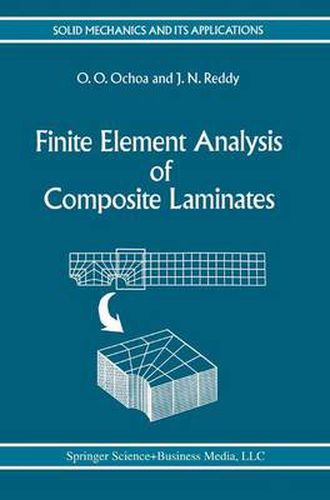Readings Newsletter
Become a Readings Member to make your shopping experience even easier.
Sign in or sign up for free!
You’re not far away from qualifying for FREE standard shipping within Australia
You’ve qualified for FREE standard shipping within Australia
The cart is loading…






This title is printed to order. This book may have been self-published. If so, we cannot guarantee the quality of the content. In the main most books will have gone through the editing process however some may not. We therefore suggest that you be aware of this before ordering this book. If in doubt check either the author or publisher’s details as we are unable to accept any returns unless they are faulty. Please contact us if you have any questions.
Composite materials are increasingly used in aerospace, underwater, and automotive structures. To take advantage of the full potential of composite materials, structural analysts and designers must have accurate mathematical models and design methods at their disposal. The objective of this monograph is to present the laminated plate theories and their finite element models to study the deformation, strength and failure of composite structures. Emphasis is placed on engineering aspects, such as the analytical descriptions, effective analysis tools, modeling of physical features, and evaluation of approaches used to formulate and predict the response of composite structures. The first chapter presents an overview of the text. Chapter 2 is devoted to the introduction of the definitions and terminology used in composite materials and structures. Anisotropic constitutive relations and laminate plate theories are also reviewed. Finite element models of laminated composite plates are presented in chapter 3. Numerical evaluation of element coefficient matrices, post-computation of strains and stresses and sample examples of laminated plates in bending and vibration are discussed. Chapter 4 introduces damage and failure criteria in composite laminates. Finally, Chapter 5 is dedicated to case studies involving various aspects and types of composite structures. Joints, cutouts, woven composites, environmental effects, postbuckling response and failure of composite laminates are discussed by considering specific examples.
$9.00 standard shipping within Australia
FREE standard shipping within Australia for orders over $100.00
Express & International shipping calculated at checkout
Stock availability can be subject to change without notice. We recommend calling the shop or contacting our online team to check availability of low stock items. Please see our Shopping Online page for more details.
This title is printed to order. This book may have been self-published. If so, we cannot guarantee the quality of the content. In the main most books will have gone through the editing process however some may not. We therefore suggest that you be aware of this before ordering this book. If in doubt check either the author or publisher’s details as we are unable to accept any returns unless they are faulty. Please contact us if you have any questions.
Composite materials are increasingly used in aerospace, underwater, and automotive structures. To take advantage of the full potential of composite materials, structural analysts and designers must have accurate mathematical models and design methods at their disposal. The objective of this monograph is to present the laminated plate theories and their finite element models to study the deformation, strength and failure of composite structures. Emphasis is placed on engineering aspects, such as the analytical descriptions, effective analysis tools, modeling of physical features, and evaluation of approaches used to formulate and predict the response of composite structures. The first chapter presents an overview of the text. Chapter 2 is devoted to the introduction of the definitions and terminology used in composite materials and structures. Anisotropic constitutive relations and laminate plate theories are also reviewed. Finite element models of laminated composite plates are presented in chapter 3. Numerical evaluation of element coefficient matrices, post-computation of strains and stresses and sample examples of laminated plates in bending and vibration are discussed. Chapter 4 introduces damage and failure criteria in composite laminates. Finally, Chapter 5 is dedicated to case studies involving various aspects and types of composite structures. Joints, cutouts, woven composites, environmental effects, postbuckling response and failure of composite laminates are discussed by considering specific examples.